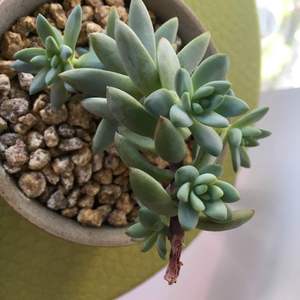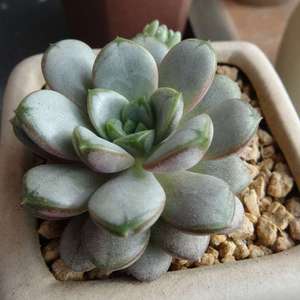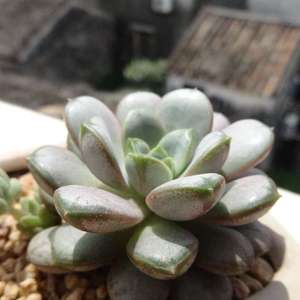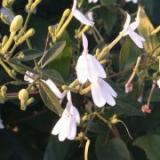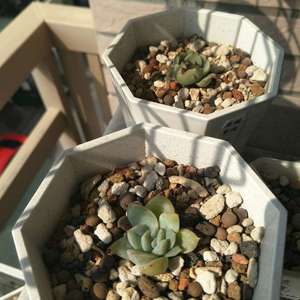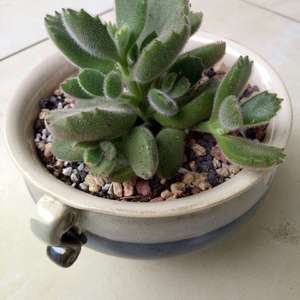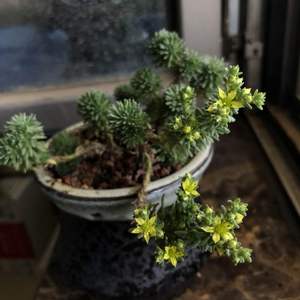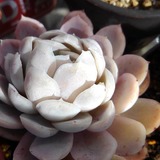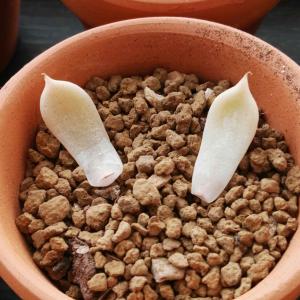文章
Miss Chen
2018年05月29日

Description: This herbaceous wildflower is 5-12" tall, consisting of a single stem and a whorl of 3 spreading leaves at its apex. The central stem is purplish green or maroon, terete, glabrous, and rather stout. Individual leaves are 3-4" long and 2-3½" across; they are ovate or oval, smooth along their margins, sessile, glabrous, and parallel-veined. The upper leaf surface is medium green or mottled green (a mixture of both light green and medium green). The leaf bases are rounded and their tips are usually blunt.
On a mature plant, a single sessile flower develops on top of the whorl of leaves. Individual flowers consist of 3 dark maroon petals about ¾-1¼" long (rarely greenish yellow or brown), 3 green or purplish green sepals about ½-1" long, 6 stamens about ½-¾" long, and an angular superior ovary with 3 recurved stigmata at its apex. The erect petals are narrowly elliptic to elliptic in shape. The sepals are narrowly lanceolate and widely spreading to slightly ascending; they lie above the plane of the leaves. The anthers have dark maroon and yellow stripes; they are much longer than the filaments. The blooming period occurs from mid- to late spring, lasting about 3 weeks. The flowers usually have a slight aroma of rotting meat. Each flower is replace by a dry 3-celled fruit that is whitish to purplish green. The fruit splits open to release the seeds. The root system consists of a stout rhizome and secondary fibrous roots. Clonal offsets occasionally develop from the rhizome.Distribution Map
Cultivation: The preference is dappled sunlight to light shade during the spring; during the summer, more shade is tolerated. The soil should be moist, rich, and loamy with abundant organic matter (decaying leaves, etc.). This wildflower develops slowly from seed, requiring several years to reach maturity. The seeds should be kept moist and planted as soon as possible; they are often slow to germinate. It is also possible to start plants from clonal offsets.
Range & Habitat: The native Sessile Trillium is found primarily in NE and southern Illinois, where it is uncommon. It is more common further to the east. Habitats include rich mesic woodlands, floodplain woodlands in valleys, lower slopes of shady ravines, and swamps. These habitats are dominated by such deciduous canopy trees as Sugar Maple, American Beech, American Basswood, and Green Ash. In Illinois, Sessile Trillium occurs in high quality woodlands where the original ground flora is still intact.
Faunal Associations: Robertson (1929) observed a small weevil, Centrinites strigicollis, visiting the flowers for pollen. Because of the malodorous odor and color of the petals, the flowers are probably visited by beetles and flies that are attracted to rotting flesh. The polyphagous caterpillars of two moths, Clepsis melaleucana (Black-Patched Clepsis) and Euplexia benesimilis (American Angle Shades), have been observed to feed on trilliums. The seeds are distributed by ants (and possibly some beetles), which are attracted to their elaisomes (food appendages). White-Tailed Deer readily browse on the foliage of trilliums, although Sessile Trillium may be eaten less often than some trillium species because of its dark-colored and less conspicuous flowers.
Photographic Location: A soggy area of Goff Woods Nature Preserve in NW Ohio. This woodlands is a small remnant of what was once called the 'Great Black Swamp,' which covered large areas of NW Ohio and NE Indiana.

Comments: In many ways, Sessile Trillium resembles the more common Prairie Trillium (Trillium recurvatum), which is also found in wooded habitats in Illinois. Sessile Trillium can be distinguished from the latter species by its sessile rounded leaves and widely spreading or ascending sepals, which are held above the leaves. In contrast, the leaves of Prairie Trillium taper gradually into petioles and the sepals of its flowers hang downward below the leaves. Both Sessile Trillium and Prairie Trillium can have flowers with greenish yellow petals, but this is rather uncommon. Other trilliums in Illinois have petals that are never colored dark maroon, or their flowers have conspicuous pedicels (flowering stalks). Other common names of Trillium sessile are Toadshade and Wake Robin.
On a mature plant, a single sessile flower develops on top of the whorl of leaves. Individual flowers consist of 3 dark maroon petals about ¾-1¼" long (rarely greenish yellow or brown), 3 green or purplish green sepals about ½-1" long, 6 stamens about ½-¾" long, and an angular superior ovary with 3 recurved stigmata at its apex. The erect petals are narrowly elliptic to elliptic in shape. The sepals are narrowly lanceolate and widely spreading to slightly ascending; they lie above the plane of the leaves. The anthers have dark maroon and yellow stripes; they are much longer than the filaments. The blooming period occurs from mid- to late spring, lasting about 3 weeks. The flowers usually have a slight aroma of rotting meat. Each flower is replace by a dry 3-celled fruit that is whitish to purplish green. The fruit splits open to release the seeds. The root system consists of a stout rhizome and secondary fibrous roots. Clonal offsets occasionally develop from the rhizome.Distribution Map
Cultivation: The preference is dappled sunlight to light shade during the spring; during the summer, more shade is tolerated. The soil should be moist, rich, and loamy with abundant organic matter (decaying leaves, etc.). This wildflower develops slowly from seed, requiring several years to reach maturity. The seeds should be kept moist and planted as soon as possible; they are often slow to germinate. It is also possible to start plants from clonal offsets.
Range & Habitat: The native Sessile Trillium is found primarily in NE and southern Illinois, where it is uncommon. It is more common further to the east. Habitats include rich mesic woodlands, floodplain woodlands in valleys, lower slopes of shady ravines, and swamps. These habitats are dominated by such deciduous canopy trees as Sugar Maple, American Beech, American Basswood, and Green Ash. In Illinois, Sessile Trillium occurs in high quality woodlands where the original ground flora is still intact.
Faunal Associations: Robertson (1929) observed a small weevil, Centrinites strigicollis, visiting the flowers for pollen. Because of the malodorous odor and color of the petals, the flowers are probably visited by beetles and flies that are attracted to rotting flesh. The polyphagous caterpillars of two moths, Clepsis melaleucana (Black-Patched Clepsis) and Euplexia benesimilis (American Angle Shades), have been observed to feed on trilliums. The seeds are distributed by ants (and possibly some beetles), which are attracted to their elaisomes (food appendages). White-Tailed Deer readily browse on the foliage of trilliums, although Sessile Trillium may be eaten less often than some trillium species because of its dark-colored and less conspicuous flowers.
Photographic Location: A soggy area of Goff Woods Nature Preserve in NW Ohio. This woodlands is a small remnant of what was once called the 'Great Black Swamp,' which covered large areas of NW Ohio and NE Indiana.

Comments: In many ways, Sessile Trillium resembles the more common Prairie Trillium (Trillium recurvatum), which is also found in wooded habitats in Illinois. Sessile Trillium can be distinguished from the latter species by its sessile rounded leaves and widely spreading or ascending sepals, which are held above the leaves. In contrast, the leaves of Prairie Trillium taper gradually into petioles and the sepals of its flowers hang downward below the leaves. Both Sessile Trillium and Prairie Trillium can have flowers with greenish yellow petals, but this is rather uncommon. Other trilliums in Illinois have petals that are never colored dark maroon, or their flowers have conspicuous pedicels (flowering stalks). Other common names of Trillium sessile are Toadshade and Wake Robin.
0
0
文章
Miss Chen
2018年05月28日

Description: This herbaceous perennial wildflower is 2-5' tall; it has an erect central stem and often develops short side stems in the upper half. The central stem is terete, light green to purple (usually the latter), glabrous, and glaucous. The alternate leaves are up to 8" long and 6" across (excluding the petioles), becoming gradually smaller as they ascend the stems. The leaves are variable in shape; they are usually 3-5 lobed and less often deltate or ovate. The margins of these leaves are dentate, undulate, or smooth. The upper surface of each leaf is medium to dark green and glabrous. The winged petioles are as long as their leaf blades or shorter. Both the stems and leaves contain a milky white latex. The central stem and upper stems (if any) terminate in panicles of flowerheads up to 2' long and 1' across. Each panicle has a central stalk that divides at its apex into 2-4 spreading branches; there may be some lower branches below. From each branch, several flowerheads droop downward from very short branchlets and peduncles. The light green to purple branches, branchlets, and peduncles of each panicle are glabrous.
Each flowerhead is about ¾" long and ½" across. The cylindrical base of each flowerhead has 8 primary bracts (phyllaries) that are linear in shape, pale greenish purple to purple, and glabrous. There are also several secondary bracts at the very bottom of the flowerhead that are much shorter than the primary bracts. The upper flowerhead has 8-14 outer ray florets and no disk florets; the petaloid rays of these florets spread outward widely when the flowerhead is in bloom. These petaloid rays are pale purple, lavender, or white; they are linear in shape with minutely toothed truncate tips. The blooming period occurs from late summer into the fall. A pleasant floral fragrance is sometimes present. The florets are replaced by small oblongoid achenes with tufts of cinnamon-brown hair at their apices; the achenes are distributed by the wind. The root system is fleshy.
Cultivation: Preferred growing conditions consist of light shade to dappled sunlight, average levels of moisture, and a fertile loamy soil. Soil that is sandy or rocky is also tolerated. The size of individual plants is strongly influenced by moisture amounts, light levels, and soil fertility.

Range & Habitat: The native White Lettuce is occasional in the northern half of Illinois, but it is rare or absent elsewhere within the state (see Distribution Map). This species is more common in areas that lie north and east of the state. Habitats include rich mesic woodlands, sandy woodlands, stabilized sand dunes with scattered trees, bluffs, wooded slopes, rocky ravines and cliff bases in wooded areas, and woodland borders. White Lettuce can be found in oak, maple-basswood, and other deciduous woodlands.
Faunal Associations: The flowerheads are cross-pollinated by bumblebees, which seek nectar. The following aphids have been observed on White Lettuce: Hyperomyzus nabali, Uroleucon ambrosiae, and Uroleucon chrysanthemi. Even though the foliage of this species has a bitter taste, it is sometimes browsed by White-Tailed Deer.
Photographic Location: A stabilized sand dune at Indiana Dunes State Park near Lake Michigan.

Comments: White Lettuce is one of five Prenanthes spp. in Illinois; two of these species occur in prairies, while the other three species occur in woodlands. The prairie species in this genus have narrow spikes of flowerheads and lanceolate leaves. The woodland species in this genus have spreading panicles of flowerheads and their leaves are often lobed (particularly the lower ones). White Lettuce can be distinguished from the other woodland species in Illinois by its primary bracts (phyllaries): Each flowerhead has 8 primary bracts that are pale purple-green and hairless. In contrast, each flowerhead of Prenanthes altissima (Tall White Lettuce) has 5 primary bracts that are light green and hairless, while the flowerhead of Prenanthes crepidinea (Great White Lettuce) has 12-15 primary bracts that are light green and hairy. These species also differ in the number of outer ray florets per flowerhead. Other common names of Prenanthes alba are Lion's Foot and Rattlesnake Root.
Each flowerhead is about ¾" long and ½" across. The cylindrical base of each flowerhead has 8 primary bracts (phyllaries) that are linear in shape, pale greenish purple to purple, and glabrous. There are also several secondary bracts at the very bottom of the flowerhead that are much shorter than the primary bracts. The upper flowerhead has 8-14 outer ray florets and no disk florets; the petaloid rays of these florets spread outward widely when the flowerhead is in bloom. These petaloid rays are pale purple, lavender, or white; they are linear in shape with minutely toothed truncate tips. The blooming period occurs from late summer into the fall. A pleasant floral fragrance is sometimes present. The florets are replaced by small oblongoid achenes with tufts of cinnamon-brown hair at their apices; the achenes are distributed by the wind. The root system is fleshy.
Cultivation: Preferred growing conditions consist of light shade to dappled sunlight, average levels of moisture, and a fertile loamy soil. Soil that is sandy or rocky is also tolerated. The size of individual plants is strongly influenced by moisture amounts, light levels, and soil fertility.

Range & Habitat: The native White Lettuce is occasional in the northern half of Illinois, but it is rare or absent elsewhere within the state (see Distribution Map). This species is more common in areas that lie north and east of the state. Habitats include rich mesic woodlands, sandy woodlands, stabilized sand dunes with scattered trees, bluffs, wooded slopes, rocky ravines and cliff bases in wooded areas, and woodland borders. White Lettuce can be found in oak, maple-basswood, and other deciduous woodlands.
Faunal Associations: The flowerheads are cross-pollinated by bumblebees, which seek nectar. The following aphids have been observed on White Lettuce: Hyperomyzus nabali, Uroleucon ambrosiae, and Uroleucon chrysanthemi. Even though the foliage of this species has a bitter taste, it is sometimes browsed by White-Tailed Deer.
Photographic Location: A stabilized sand dune at Indiana Dunes State Park near Lake Michigan.

Comments: White Lettuce is one of five Prenanthes spp. in Illinois; two of these species occur in prairies, while the other three species occur in woodlands. The prairie species in this genus have narrow spikes of flowerheads and lanceolate leaves. The woodland species in this genus have spreading panicles of flowerheads and their leaves are often lobed (particularly the lower ones). White Lettuce can be distinguished from the other woodland species in Illinois by its primary bracts (phyllaries): Each flowerhead has 8 primary bracts that are pale purple-green and hairless. In contrast, each flowerhead of Prenanthes altissima (Tall White Lettuce) has 5 primary bracts that are light green and hairless, while the flowerhead of Prenanthes crepidinea (Great White Lettuce) has 12-15 primary bracts that are light green and hairy. These species also differ in the number of outer ray florets per flowerhead. Other common names of Prenanthes alba are Lion's Foot and Rattlesnake Root.
0
0
文章
Miss Chen
2018年05月28日

Description: This herbaceous plant is 1-2½' tall with an ascending leafy stem that is unbranched. The central stem is light to medium green, slightly zigzag, and glabrous to short-pubescent. Alternate leaves occur along this stem that are 2-5" long and 1-2½" long; they are broadly elliptic in shape, smooth (entire) along their margins, and sessile. The upper leaf surface is medium to dark green and glabrous, while the lower leaf surface is pale to medium green and finely short-hairy along the major veins (a 10x hand lens may be required to see this). Leaf venation is parallel with 3-7 prominent veins. Flowers are produced individually or in groups of 2-3 from the axils of most leaves; they are suspended below the leaves on short peduncles and pedicels. Each flower is 8-14 mm. in length and narrowly cylindrical in shape, consisting of 6 pale greenish yellow to greenish white tepals, 6 inserted stamens, and a 3-celled ovary with a single style. Around the outer rim of each flower, there are 6 straight to slightly recurved lobes about 2-3 mm. in length. The filaments of the stamens are minutely warty and terete. The peduncles and pedicels are light green, slender, and glabrous; they are about ¼-½" in length during the blooming period, but become about ½-1" in length when berries are produced.
The blooming period occurs from mid- to late spring, lasting about 3 weeks. During the summer, the flowers are replaced by berries. At maturity, these berries are dark blue-violet to black, globoid in shape, and often glaucous; they are 6-9 mm. across. The interior of these berries is fleshy with several seeds. Individual seeds are 1.5-3.0 mm. long, globoid in shape, and either tan or straw-colored. The root system has knotty rhizomes up to ½" thick. Small clonal colonies are often produced from these rhizomes.
Cultivation: The preference is partial sun to medium shade, moist conditions, and soil containing either loam or sandy loam with decaying organic matter. Most growth and development occurs during the cool weather of spring.

Range & Habitat: The native Hairy Solomon's Seal is rare in northern Illinois, while in the rest of the state it is absent (Distribution Map). It is state-listed as 'endangered.' Illinois lies along the southern range limit of this species (excluding mountainous areas in the Appalachians). Habitats include moist to mesic woodlands, sandy woodlands, and lower slopes of forested sand dunes near Lake Michigan. In Illinois, Hairy Solomon's Seal is found in higher quality natural areas.
Faunal Associations: The flowers attract the Ruby-throated Hummingbird, honeybees, bumblebees, and probably other bees. These floral visitors feed primarily on the nectar, although some of the bees also collect pollen for their larvae. A small number of insects feed destructively on the foliage and plant juices of Polygonatum spp. (Solomon's Seal species). These insects include the aphids Catamergus kickapoo and Macrosiphum gei, the thrips Ctenothrips bridwelli, and caterpillars of the moth Clepsis melaleucana (Black-Patched Clepsis). The berries are probably eaten by such woodland birds as the Ruffed Grouse, various thrushes, and the Veery. These birds spread the seeds to new areas. White-tailed Deer occasionally graze on the foliage of Solomon's Seal species.
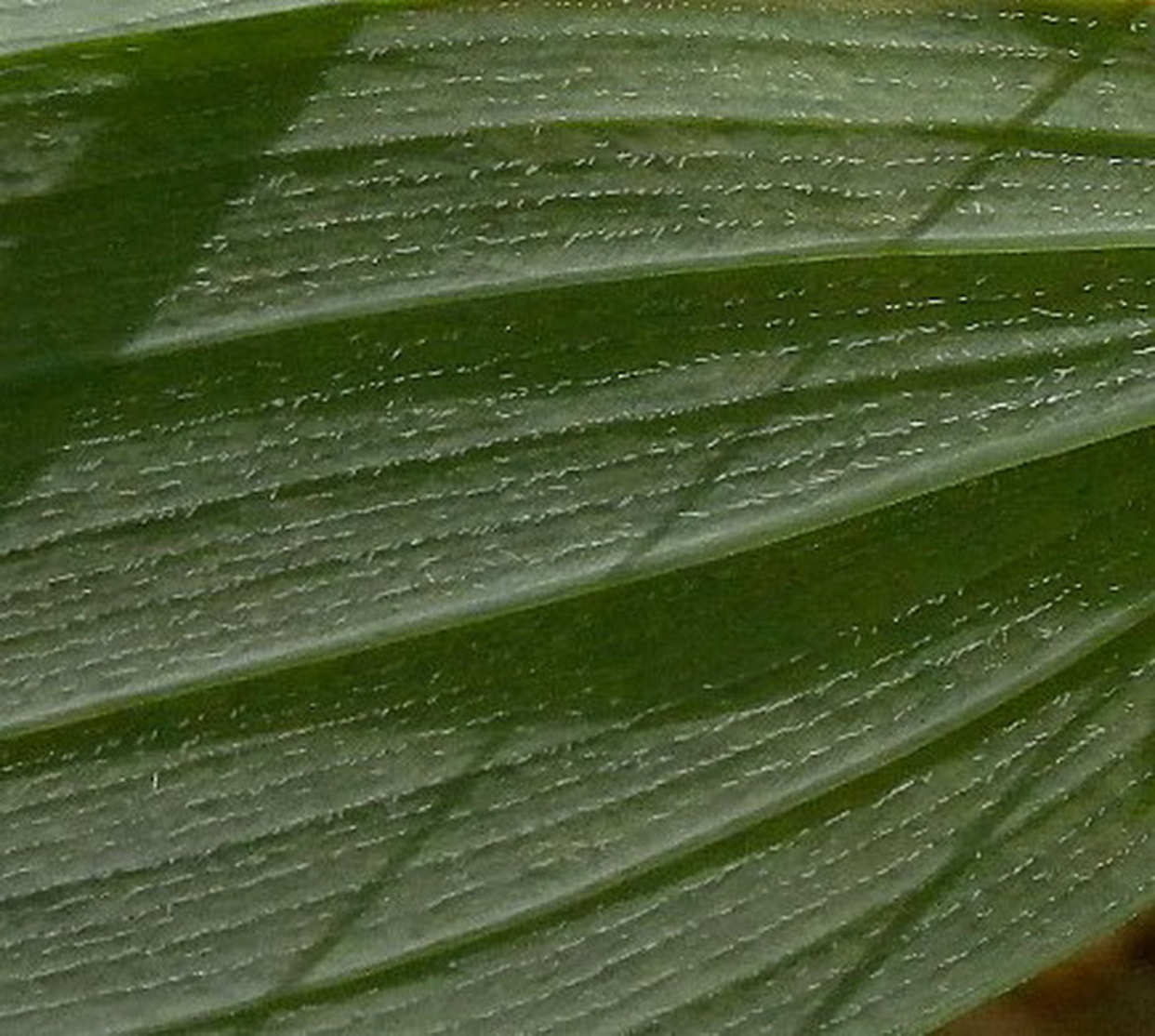
Photographic Location: A moist sandy woodland at the Indiana Dunes State Park in NW Indiana.
Comments: This species can be easily confused with the more common Polygonatum commutatum (Smooth Solomon's Seal). Hairy Solomon's Seal tends to be a smaller plant that produces fewer flowers and berries underneath its leaves (usually only 1-2 flowers or berries per leaf). It also has a tendency to bloom a little earlier in the year than the latter plant. However, the most distinctive characteristics of Hairy Solomon's Seal are 1) the short fine hairs along the veins of its leaf undersides, and 2) the warty filaments of its flowers.
The blooming period occurs from mid- to late spring, lasting about 3 weeks. During the summer, the flowers are replaced by berries. At maturity, these berries are dark blue-violet to black, globoid in shape, and often glaucous; they are 6-9 mm. across. The interior of these berries is fleshy with several seeds. Individual seeds are 1.5-3.0 mm. long, globoid in shape, and either tan or straw-colored. The root system has knotty rhizomes up to ½" thick. Small clonal colonies are often produced from these rhizomes.
Cultivation: The preference is partial sun to medium shade, moist conditions, and soil containing either loam or sandy loam with decaying organic matter. Most growth and development occurs during the cool weather of spring.

Range & Habitat: The native Hairy Solomon's Seal is rare in northern Illinois, while in the rest of the state it is absent (Distribution Map). It is state-listed as 'endangered.' Illinois lies along the southern range limit of this species (excluding mountainous areas in the Appalachians). Habitats include moist to mesic woodlands, sandy woodlands, and lower slopes of forested sand dunes near Lake Michigan. In Illinois, Hairy Solomon's Seal is found in higher quality natural areas.
Faunal Associations: The flowers attract the Ruby-throated Hummingbird, honeybees, bumblebees, and probably other bees. These floral visitors feed primarily on the nectar, although some of the bees also collect pollen for their larvae. A small number of insects feed destructively on the foliage and plant juices of Polygonatum spp. (Solomon's Seal species). These insects include the aphids Catamergus kickapoo and Macrosiphum gei, the thrips Ctenothrips bridwelli, and caterpillars of the moth Clepsis melaleucana (Black-Patched Clepsis). The berries are probably eaten by such woodland birds as the Ruffed Grouse, various thrushes, and the Veery. These birds spread the seeds to new areas. White-tailed Deer occasionally graze on the foliage of Solomon's Seal species.

Photographic Location: A moist sandy woodland at the Indiana Dunes State Park in NW Indiana.
Comments: This species can be easily confused with the more common Polygonatum commutatum (Smooth Solomon's Seal). Hairy Solomon's Seal tends to be a smaller plant that produces fewer flowers and berries underneath its leaves (usually only 1-2 flowers or berries per leaf). It also has a tendency to bloom a little earlier in the year than the latter plant. However, the most distinctive characteristics of Hairy Solomon's Seal are 1) the short fine hairs along the veins of its leaf undersides, and 2) the warty filaments of its flowers.
0
0
文章
Miss Chen
2018年05月27日

Description: This perennial wildflower develops an erect stem about 2-8" tall that has a whorl of 5-9 leaves at its apex. The stem is light green (sometimes tinted yellow or red), terete, glabrous, and relatively slender. The stems are either naked, or they have a few scale-like leaves that are inconspicuous. The larger whorled leaves at the apex are 1-4" long and ¼-1½" across; they are more or less medium green, lanceolate-elliptic to oblong-elliptic in shape, relatively smooth along their margins, and glabrous. These latter leaves taper gradually to acute tips, while their bases are narrowly wedge-shaped; they are either short-petioled or sessile. In each whorl, these leaves can vary significantly in size. Leaf venation is pinnate.
From the center of the whorled leaves, there develops 1-3 flowers on erect or ascending pedicels. The pedicels are ¾-2½" long, terete, light green (sometimes tinted yellow or red), glabrous, and slender. Each flower is about ½-¾" across, typically consisting of 7 white spreading petals, 7 light green sepals, 7 stamens with pale yellow anthers, and a light green ovary with a single white style. However, a flower can have as few as 5 petals, sepals, and stamens, or as many as 9. The petals are lanceolate-elliptic in shape, while the sepals are linear-lanceolate and glabrous. The petals are longer than the sepals. The blooming period is mid-spring to early summer (in Illinois & neighboring areas), lasting about 2-4 weeks. Afterwards, the flowers are replaced by ovoid seed capsules that are 5-celled; they are shorter than the sepals. These capsules eventually split open to release their seeds. The root system is rhizomatous and fibrous; the rhizomes are slender and long.
Cultivation: The preference is light shade or dappled sunlight, moist conditions, an acidic soil containing peat and/or sand, and cool summer temperatures.

Range & Habitat: The native Starflower is rare in Illinois and state-listed as 'threatened.' It is restricted to the northern section of the state (see Distribution Map). Illinois lies along the southern range-limit of this species. Habitats include tamarack bogs, birch bogs, hummocks in sandy swamps, edges of sandy woodlands along swamps, and ravines leading out of bluffs. This wildflower is found in high-quality natural areas where either coniferous or deciduous trees are present.
Faunal Associations: Records of floral-faunal relationships for Starflower (Trientalis borealis) are sparse. The flowers attract Halictid bees, Andrenid bees (Andrena spp.), and Syrphid flies. All of these insects either collect or feed on pollen, as the flowers do not produce nectar. The Eastern Chipmunk sometimes eats the seeds/capsules of this wildflower. It is possible that other small rodents do this as well.

Photographic Location: A moist woodland along the edge of a sandy swamp in NW Indiana.
Comments: This delicate wildflower is unusual because it typically has 7-petaled flowers. The flowers of Starflower superficially resemble those of one of the showier chickweeds (e.g., Stellaria pubera), except their petals are usually more numerous and they are located above a conspicuous whorl of leaves. Two other species in the Trientalis genus have been described, but they don't occur in Illinois. One species from the Pacific northwest of North America, Trientalis latifolia, has pinkish flowers rather than white, while a European species, Trientalis europaea, has pedicels that are usually longer than the leaves. A more specific common name of Trientalis borealis is Northern Starflower.
From the center of the whorled leaves, there develops 1-3 flowers on erect or ascending pedicels. The pedicels are ¾-2½" long, terete, light green (sometimes tinted yellow or red), glabrous, and slender. Each flower is about ½-¾" across, typically consisting of 7 white spreading petals, 7 light green sepals, 7 stamens with pale yellow anthers, and a light green ovary with a single white style. However, a flower can have as few as 5 petals, sepals, and stamens, or as many as 9. The petals are lanceolate-elliptic in shape, while the sepals are linear-lanceolate and glabrous. The petals are longer than the sepals. The blooming period is mid-spring to early summer (in Illinois & neighboring areas), lasting about 2-4 weeks. Afterwards, the flowers are replaced by ovoid seed capsules that are 5-celled; they are shorter than the sepals. These capsules eventually split open to release their seeds. The root system is rhizomatous and fibrous; the rhizomes are slender and long.
Cultivation: The preference is light shade or dappled sunlight, moist conditions, an acidic soil containing peat and/or sand, and cool summer temperatures.

Range & Habitat: The native Starflower is rare in Illinois and state-listed as 'threatened.' It is restricted to the northern section of the state (see Distribution Map). Illinois lies along the southern range-limit of this species. Habitats include tamarack bogs, birch bogs, hummocks in sandy swamps, edges of sandy woodlands along swamps, and ravines leading out of bluffs. This wildflower is found in high-quality natural areas where either coniferous or deciduous trees are present.
Faunal Associations: Records of floral-faunal relationships for Starflower (Trientalis borealis) are sparse. The flowers attract Halictid bees, Andrenid bees (Andrena spp.), and Syrphid flies. All of these insects either collect or feed on pollen, as the flowers do not produce nectar. The Eastern Chipmunk sometimes eats the seeds/capsules of this wildflower. It is possible that other small rodents do this as well.

Photographic Location: A moist woodland along the edge of a sandy swamp in NW Indiana.
Comments: This delicate wildflower is unusual because it typically has 7-petaled flowers. The flowers of Starflower superficially resemble those of one of the showier chickweeds (e.g., Stellaria pubera), except their petals are usually more numerous and they are located above a conspicuous whorl of leaves. Two other species in the Trientalis genus have been described, but they don't occur in Illinois. One species from the Pacific northwest of North America, Trientalis latifolia, has pinkish flowers rather than white, while a European species, Trientalis europaea, has pedicels that are usually longer than the leaves. A more specific common name of Trientalis borealis is Northern Starflower.
0
0








